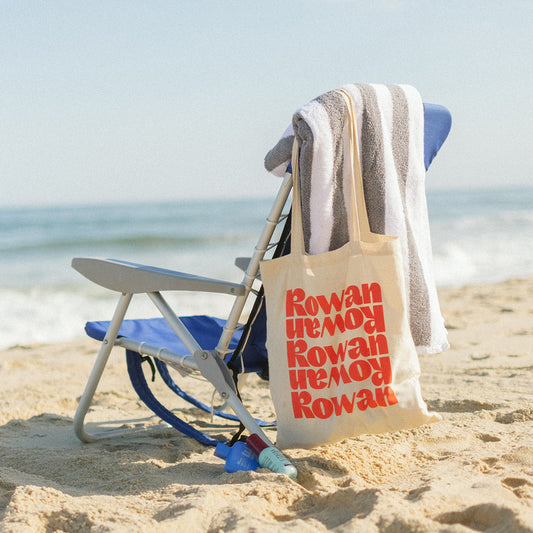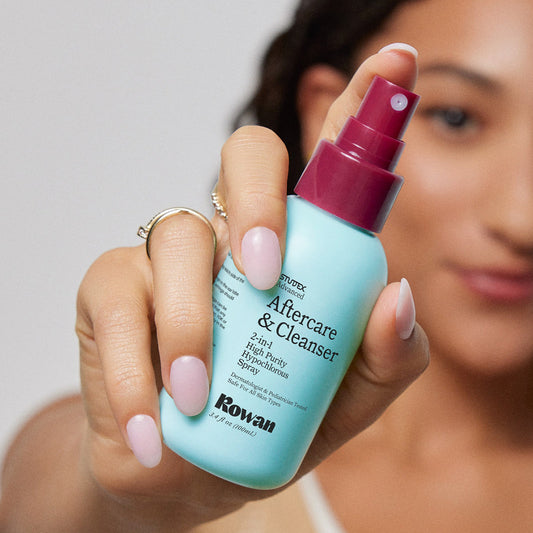How Weather Affects Your Piercing
Seasonal Piercing Care

Each season brings its own set of challenges when it comes to healing piercings. From sun and sweat in the summer to dry air and bulky clothing in the winter, environmental changes can impact your piercing’s healing process more than you might think.
The good news? With a little preparation and mindful aftercare, you can keep your piercing clean, comfortable, and on track, no matter the time of year. Here’s what to watch out for each season, and how to keep your piercing healthy in every kind of weather.
SUMMER
Sweat, swimming, sun exposure, and friction are some of the biggest culprits when it comes to irritation and delayed healing in the summertime.
Sweat can trap bacteria and irritate fresh piercings, while sunscreen - especially when applied too close - can clog or inflame healing tissue. Even summer staples like sunglasses and baseball caps can cause problems if they rub against ear piercings.
To protect your piercing this summer:
- Clean your piercing with Advanced Aftercare 2 - 3 times daily - AND after sweating.
- Rinse your piercing with clean water and spray with Advanced Aftercare after swimming to flush out bacteria and pool chemicals.
- Regularly clean sunglasses, hats, and anything that comes into contact with your piercing. (Don’t forget your cellphone!)
- Only swim in clean bodies of water such as chlorinated pools for at least 4 weeks post-piercing.
FALL
Autumn’s cozy energy brings unique challenges for healing piercings. Dry air, bulky layers, scarves, and seasonal illness can all interfere with the healing process if you're not careful.
Scarves, hoodies, and hats can easily snag or irritate new piercings. And, as temperatures drop, you become more prone to illness, and it’s more difficult for your immune system to heal your new piercing when it’s also fighting off a cold.
To protect your piercing this fall:
- Opt for daintier earrings such as the 14k Ball Trinity Flat Back Stud or 14k Lab Diamond Bezel Flat Back Stud to decrease the likelihood of snags.
- Choose smooth, finely woven scarves and be gentle when putting on or removing them.
- Take extra care when pulling off bulkier clothing like sweaters or jackets.
- Support your immune system with over-the-counter or at-home remedies to stay healthy during healing.
- Snags happen. Spray Advanced Aftercare if you experience swelling or irritation.
WINTER
Winter can be harsh on healing piercings. Between cold temperatures, dry air, and full ear coverings, it's important to take a few extra precautions to keep things healing smoothly.
Cold weather can cause metal jewelry to contract, leading to discomfort or increased sensitivity. In extreme cases, cold exposure may cause swelling and redness. Meanwhile, dry air can irritate healing tissue and slow down the healing process.
Covering your ears completely with earmuffs or thick accessories might seem like a good idea, but it can trap moisture and bacteria, creating the perfect environment for irritation or infection. It can also apply unwanted pressure on your piercings.
To protect your piercings this winter:
- Clean your scarves, beanies, and other winter gear regularly to reduce the risk of bacteria transfer.
- Opt for beanies instead of earmuffs to avoid direct pressure on your ear piercings.
- Use Advanced Aftercare more frequently - especially if you notice redness, swelling, or dryness.
SPRING
Spring brings blooming flowers, warmer weather - and a few unique challenges for healing piercings. Pollen and fluctuating temperatures can irritate healing tissue if you're not careful.
Pollen can easily settle into your hair and transfer to your piercing site, leading to irritation or even infection. Meanwhile, the unpredictable weather often means layering up or down, and hoodies or sweatshirts can snag on fresh piercings during all that on-and-off action.
To keep your piercing safe this spring:
- Clean your piercing with Advanced Aftercare 2–3 times a day, especially if you’ve been outdoors.
- Be mindful when putting on or adjusting hoodies and sweatshirts, as hoods can catch and tug on healing piercings.
- Try to keep hair tied back or gently wipe it down after being outside to minimize pollen exposure near the piercing site.



